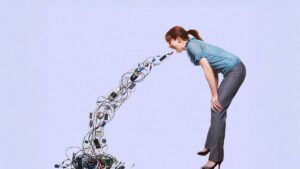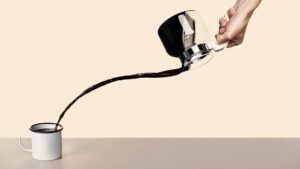Booming property prices could leave the RBA in a Mexican standoff

Pic: metamorworks / iStock / Getty Images Plus via Getty Images
Australian property prices are at record highs after four straight months of strong gains. And most analysts expect the property party to continue this year.
After all, rock bottom interest rates aren’t just good for high-growth tech stocks. As a general rule, they also put a rocket under house prices.
CBA economist Gareth Aird now expects house prices to rise by eight per cent in 2021 and six per cent in 2022.
While putting a blanket macro forecast across the entire housing market is an imprecise science, those are bullish numbers.
And Aird reckons if anything, prices will probably rise faster than that. “The Australian housing market is on the cusp of a boom,” he said.
CBA’s model for future house prices is comprised of three quantitative factors:
– Annual change in mortgage rates (sharp fall, with benchmark rates slashed to (almost) zero in the wake of the pandemic);
– Annual flow of housing credit (surging, with loans to owner-occupiers ripping higher by 38.9pc in December); and
– Auction clearance rates.
It overlays that data against a qualitative factor; house price expectations in Westpac’s monthly consumer sentiment survey.
A literal read of those inputs suggests house prices really will rocket higher, by more than 10 per cent this year.
But Aird tempered that forecast, noting that high vacancy rates in the rental market for Sydney and Melbourne apartments may drag on top-line estimates.
Regardless, he said the first input in the model — mortgage rates — are currently below the average rental yield in most property markets across the country.
That’s “unusual”, and suggests more calibrations are in store.
“For the bulk of Australia, equilibrium will be achieved via further dwelling price rises,” Aird said.
The Mexican standoff
In short, Aird said the boom can be summarised as follows: “record low mortgage rates coupled with a V-shaped recovery in the labour market”.
And the arbiter of interest rates, RBA governor Philip Lowe, has indicated red-hot property markets aren’t the central bank’s chief concern of late.
To the extent house price increases are sustainable, they act to “support household balance sheets and encourage spending through positive wealth effects”, Lowe said earlier this month.
The RBA was also pretty direct on the outlook for interest rates; no rate hikes until 2024.
Aird noted that the RBA’s policy response to COVID-19 marked the end-game in a 30-year structural downtrend for interest rates.
And if the conditions that warrant a rate increase — economic growth and higher inflation — do come to pass, booming property prices leaves the central bank in something of a Mexican standoff. There’s less and less room to change strategy.
“It will be incredibly hard for the RBA to raise the cash rate in any material sense from here, given the level of household indebtedness,” Aird said.
Twice over the last decade, policymakers implemented macro-prudential measures to tap the brakes on property markets when it looked like things were running too hot.
Although property prices are rising fast, the prospect of more ‘macro-pru’ hasn’t got much airtime yet.
Instead, Aird dialled in on the end-game (for interest rates). If Australia faces another economic shock down the line, the rates lever is no longer an option.
That means the onus may shift away from monetary policy and towards fiscal policy, to provide the necessary economic support measures.
Aird said the central bank will still play a key role — by financing the government directly.
As part of its existing QE program, the RBA does buy government bonds except it does so ‘indirectly’ on the secondary market (more on that here).
But in a post-COVID world, Aird reckons it’s increasingly likely we are “inching towards a new paradigm”.
It’s an idea he first raised last August, in assessing the fallout from the record amounts of fiscal and monetary stimulus deployed to shield the world from a once-in-100-year health crisis.
“It may still be a long time away, but the bottom line is that the system as we know it will need to be reset, and the printing press will be part of that reset,” Aird said.
UNLOCK INSIGHTS
Discover the untold stories of emerging ASX stocks.
Daily news and expert analysis, it's free to subscribe.
By proceeding, you confirm you understand that we handle personal information in accordance with our Privacy Policy.








